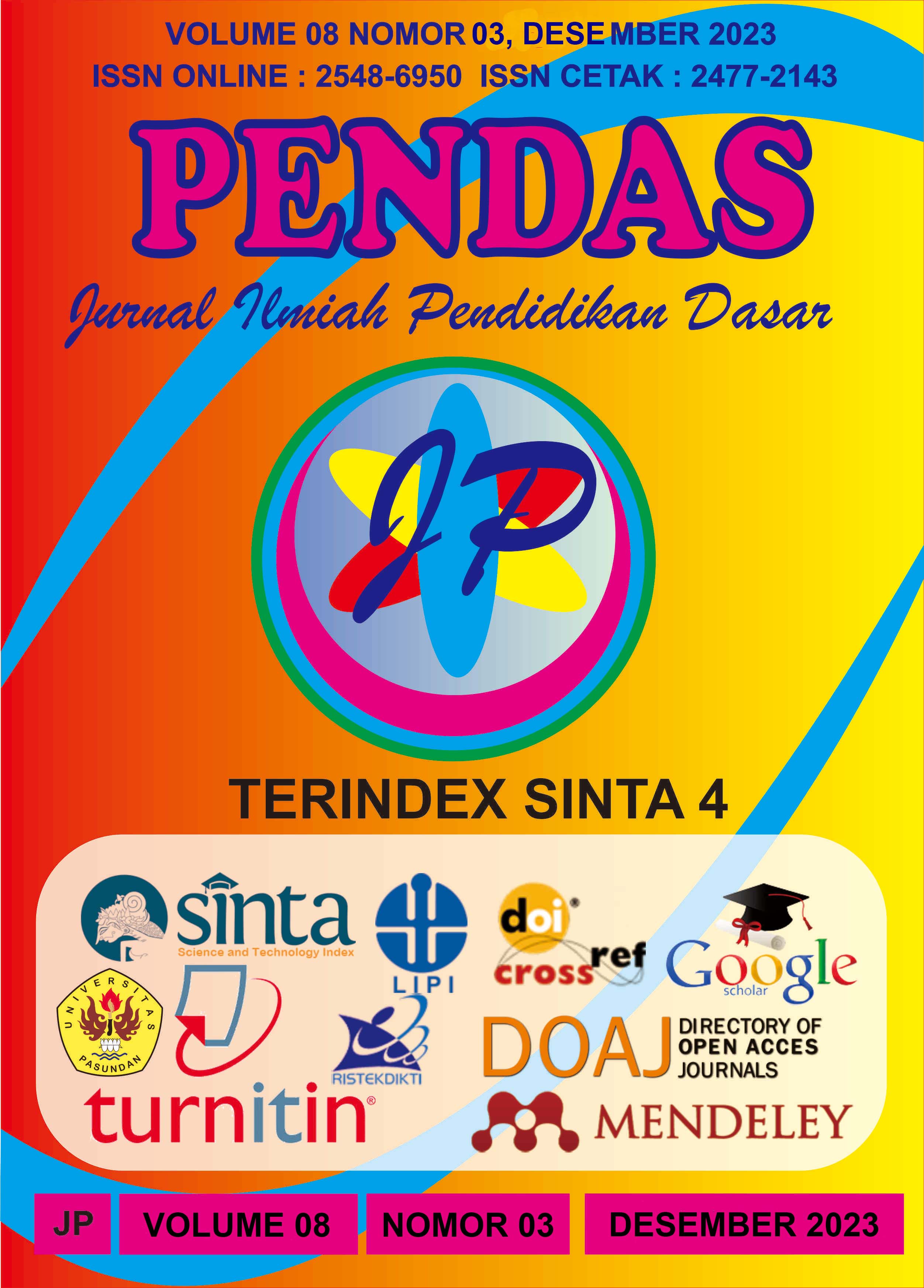DAMPAK TAYANGAN KEKERASAN DI MEDIA SOSIAL TERHADAP PERILAKU BULLYING (STUDI KASUS PADA SISWA KELAS X SMA NEGERI 1 WANASABA)
DOI:
https://doi.org/10.23969/jp.v8i3.10741Keywords:
Impact, violent programs, social media, bullyingAbstract
The information technology in Indonesia has developed quite rapidly in recent years, called social media. The rapidly growing social media sites include Facebook, Twitter, YouTube, and Instagram. Based on data on active users of social media in Indonesia, teenagers most often use social media, which allows for the existence of violent impressions that can have an impact on bullying behavior, so that various characters of violent behavior appear in schools. The purpose of this study is to determine the forms of bullying and the impact of violent shows on bullying behavior. Then for the research method used, namely a qualitative approach and type of case study. Based on the description of the data, the results of the study show that the forms of bullying carried out are still at a low level, such as speaking harshly or speaking dirty to friends verbally, mocking friends, giving negative stigma, making fun of each other between personal students verbally, insulting each other, and teasing, which are caused by watching violent programs on social media. Because violent broadcasts on social media have an impact on children who watch violent programs, they tend to be more aggressive and more likely to commit these acts.Downloads
References
Haris, H. (2015). Wawancara, Observasi, Dan Focus Groups. Jakarta: Rajawali Pers.
Haslan, M. M., & Fauzan, A. (2021). Faktor-faktor Mempengaruhi Terjadinya Perilaku Perundungan (Bullying) pada Siswa SMPN Se-Kecamatan Kediri Lombok Barat. 9(2), 24–29.
Haslan, M. M., Fauzan, A., & Kurniawansyah, E. (2021). Penyuluhan Tentang Dampak Perilaku Bullying Bagi Siswa dan Upaya Untuk Mengatasinya di SMPN 1 Gerung Kabupaten Lombok Barat.
Madiana, I., Alqadri, B., Sumardi, L., & Mustari, M. (2022). Penerapan Kebijakan Sistem Zonasi Kesetaraan Hak Memperoleh Pendidikan Serta Dampaknya Terhadap. 7, 735–740.
Matthew B Milles, A Michael Huberman & Johnny Saldana. (2014). Qualitative Data Analysis. California: Sage Publications.
Mayasari, F. (2022). Etnografi Virtual Fenomena Cancel Culture dan Partisipasi Pengguna Media Terhadap Tokoh Publik di Media Sosial. Journal of Communication and Society, 1(01), 27-44. https://doi.org/10.55985/jocs.v1i01.15
Mekarisce, A. A. (2020). Teknik Pemeriksaan Keabsahan Data pada Penelitian Kualitatif di Bidang Kesehatan Masyarakat. Jurnal Ilmiah Kesehatan Masyarakat : Media Komunikasi Komunitas Kesehatan Masyarakat, 12(3), 145–151. https://doi.org/10.52022/jikm.v12i3.102
Moeloeng. (2015). Metodologi Penelitian Kualitatif (p. 6). PT REMAJA ROSDAKARYA.
Moleong, L. J. (2017). Metodologi Penelitian Kualitatif. Bandung. PT Remaja Rosdakarya.
Pasha, D. A., Alqadri, B., Dahlan, D., & Mustari, M. (2022). Pelaksanaan Program Sekolah Ramah Anak di SMPN 1 Gunungsari. MANAZHIM, 4(2), 232-259.
Rizqi, S. A., Agung, A., Yuliandani, I., Yudheansyah, W. R., Emirsyalnuary, E., Andini, K., Sari, T. S., Agung, A., Suksma, F., Lusiana, A. D., Aulia, R., Duwiri, D. M., & Pristianty, L. (2022). Pemilihan Produk Anti Acne di Media Sosial pada Remaja di Beberapa Kota / Kabupaten di Indonesia. 9(1), 38–43.
Rahmadi. (2011). Pengantar Metodologi Penelitian. Banjarmasin: Antasari Press.
Raharja, I. F. (2019). Bijak Menggunakan Media Sosial di Kalangan Pelajar Menurut Undang-Undang Nomor 19 Tahun 2016 Tentang Informasi dan Transaksi Elektronik. Jurnal Selat, 6(2), 235–246. https://doi.org/10.31629/selat.v6i2.1437
Sidiq, U & Choiri, M, M. (2019). Metode Penelitian Kualitatif Di Bidang Pendidikan. Ponorogo : CV. Nata Karya.
Sugiyono. (2018). Metode Penelitian Kualitatif Bandung: Alfabeta.
Sumardi, L., & Alqadri, B. (2022). Faktor-faktor Penyebab Rendahnya Minat Melanjutkan Studi Anak Pada Masyarakat Nelayan di Desa Seruni Mumbul Kabupaten Lombok Timur. 7, 786–793.
Suprihatin, B. (2012). Hubungan Intensitas Menonton Tayangan Kekerasan di Televisi dan Intensitas Pemberian Punishment dengan Perilaku Bulyying di Kalangan Pelajar SMA. 1(1).
Tasikmalaya, S. M. A. N. (2012). Pengaruh Kelompok Teman Sebaya (Peer Group) Terhadap Perilaku Bullying Siswa di Sekola. 10(2), 6-11.
Wijaya, S., Bogor, H., & Kunci, K. (2019). Hubungan Paparan Tayangan Kekerasan dengan Perilaku Agresif Remaja di SMPN 1 Gunung Putri Kabupaten Bogor Satrio Kusumo Lelono The Relationship Between Exposure Violence To Adolescent Aggressive Behavior In Gunung Putri 1 Junior Perilaku Agresif merupakan. 11, 30–37.
Zubair, M., Ismail, M., & Alqadri, B. (2019). Rekonstruksi nilai pancasila dengan pendekatan local wisdom masyarakat sasak sebagai upaya penyelamatan identitas nasional melalui mata kuliah kewarganegaraan di Universitas Mataram. Jurnal Ilmiah Pena, 1(2), 1–8.
Downloads
Published
Issue
Section
License
Copyright (c) 2023 Pendas : Jurnal Ilmiah Pendidikan Dasar

This work is licensed under a Creative Commons Attribution 4.0 International License.



















